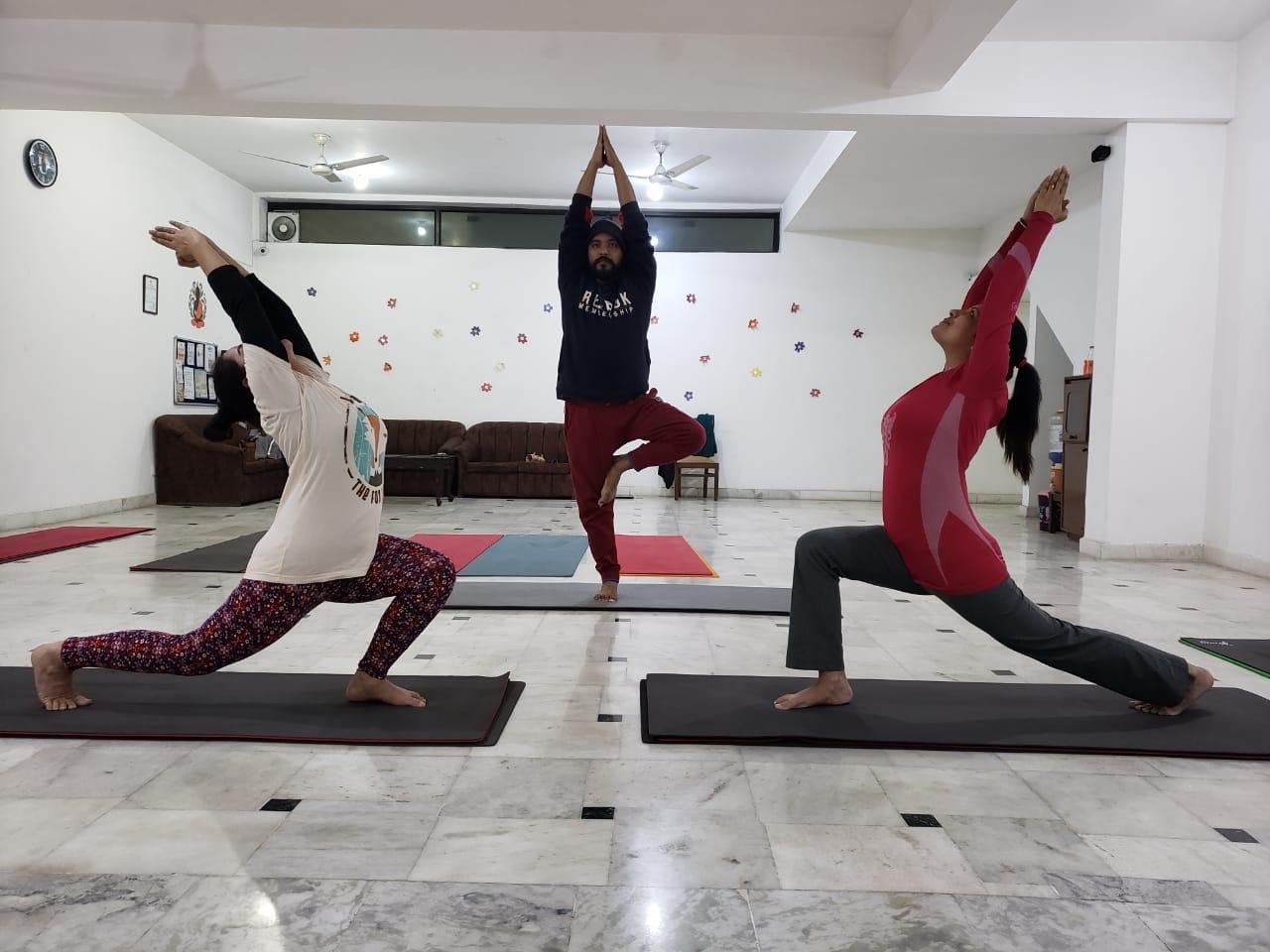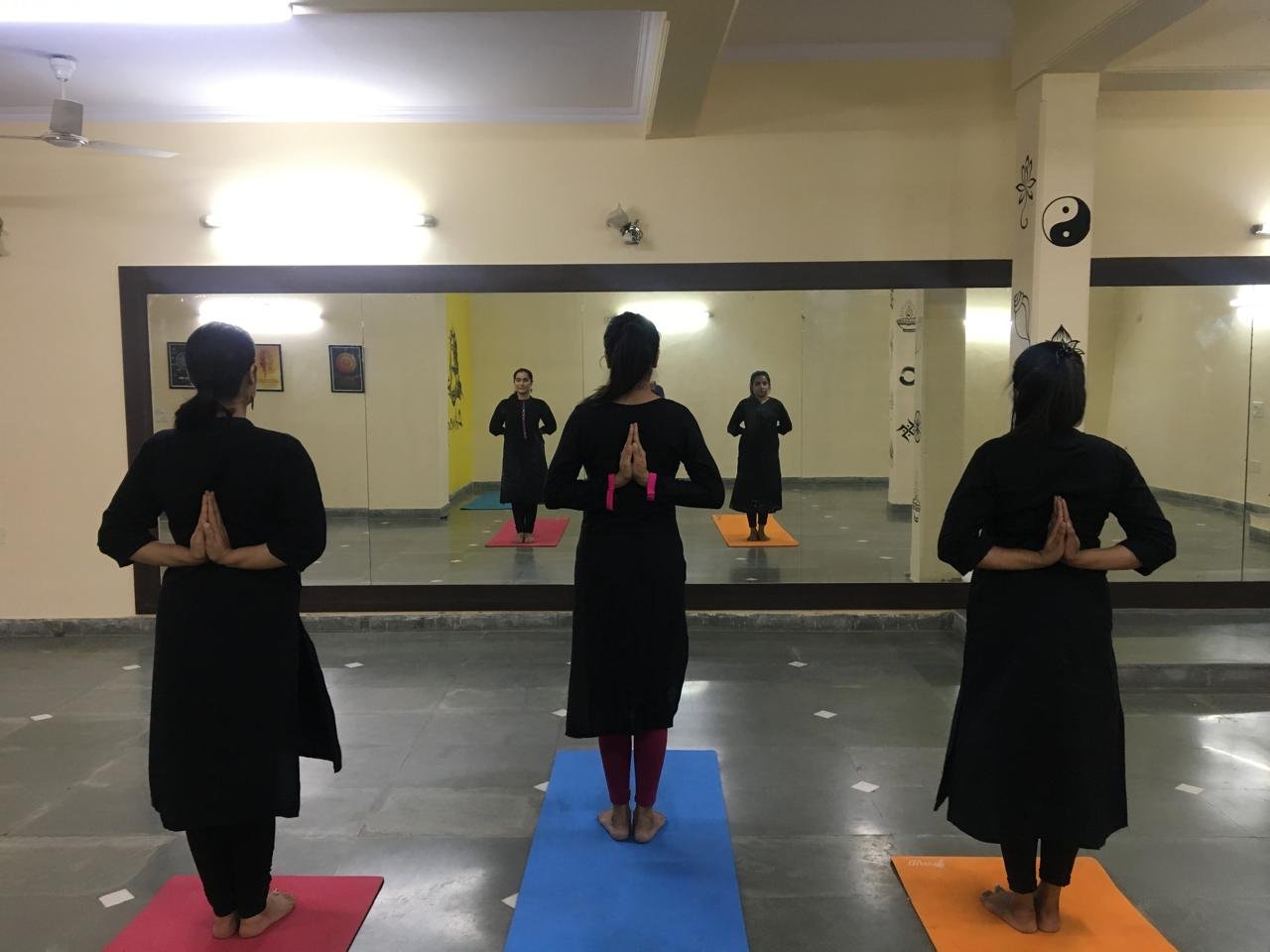Introduction to Yoga
Yoga, derived from the Sanskrit word “Yuj” meaning “to unite,” is not merely physical exercise. It is a holistic discipline that aligns the body, breath, mind, and consciousness. In today’s world of stress, anxiety, and fast-paced living, Yoga offers a timeless solution — a way to restore balance, improve health, and awaken inner energy
At Dhyan Urja, we embrace Yoga as both an ancient science and a modern tool for well-being. Through mindful movement, controlled breath, and meditative awareness, we help you reconnect with yourself — body, mind, and soul.

The Philosophy of Yoga
Ancient texts like the Yoga Sutras of Patanjali describe Yoga as “Chitta Vritti Nirodha” — calming the fluctuations of the mind. This philosophy has profound implications today: our constant digital distractions, work stress, and emotional turbulence keep us in a state of imbalance.
Yoga teaches us to:
- Be present in the moment.
- Cultivate inner discipline.
- Harmonize the body’s energy systems.
- Move from chaos toward clarity.
Modern Relevance of Yoga
Unlike traditional exercise routines, Yoga is more than just fitness
Physical Health – Improves flexibility, posture, strength, and cardiovascular health.
Mental Well-Being – Reduces anxiety, stress, and overthinking<\/p>
Neuroplasticity – Modern neuroscience shows meditation and breathwork in Yoga reshape the brain for focus and resilience.
Energy Optimization – Yogic practices like Pranayama and Bandhas regulate bio-energy,
aligning with today’s understanding of nervous system regulation
Mind-Body Integration – By combining breath, movement, and awareness, Yoga builds
coherence between the heart, brain, and body.
The Eight Limbs of Yoga (Ashtanga Yoga)
Patanjali outlined eight steps toward self-realization, which are still practical today:
- Yama – Ethical discipline (non-violence, truth, integrity).
- Niyama – Self-care practices (cleanliness, discipline, self-study, surrender).
- Asana – Physical postures for strength and flexibility.
- Pranayama – Breath regulation to channel life force.
- Pratyahara – Withdrawal from sensory distractions.
- Dharana – Focused concentration.
- Dhyana – Meditation for awareness and stillness.
- Samadhi – State of blissful unity with higher consciousness.
At Dhyan Urja, we integrate these timeless principles into practical, modern approaches that anyone can follow.


Yoga Practices at Dhyan Urja
We design Yoga sessions to balance both ancient traditions and modern needs:
Asanas (Postures): From Surya Namaskar (Sun Salutation) to restorative poses that
enhance flexibility and circulation.
Pranayama (Breathing): Techniques like Anulom Vilom (alternate nostril breathing) and
Kapalabhati for energy purification.
Mindful Flow: Gentle movement sequences (modern Vinyasa & Hatha styles) for stress
release.
Meditation: Guided sessions to quiet the mind and connect inward.
Yoga Nidra: Yogic sleep for deep relaxation and subconscious healing.
Energy Awareness: Subtle practices to awaken prana and balance chakras.
Yoga as Energy Channelization
The ultimate aim of Yoga is to recognize the immense energy within us and channel it effectively. Most of us operate at a fraction of our true potential because our energies are scattered outward. Through Yoga:
- We reclaim inner stillness amidst chaos.
- We channelize energy inward, unlocking vitality.
- We realize that power and peace are already within us — we just need to awaken them
Conclusion
Yoga is not an escape from life; it is a way of living fully, consciously, and joyfully. At Dhyan
Urja, our Yoga journey blends ancient wisdom with modern science, guiding you to:
- Reconnect with your true self.
- Heal physically, emotionally, and energetically.
- Awaken the inner power you already possess.
